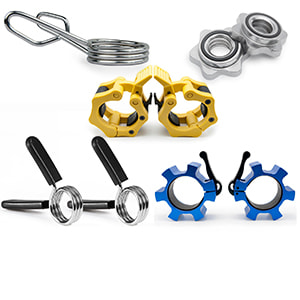How to do a barbell shoulder press: Correct type, variations, and common mistakes
How to Do a Barbell Shoulder Press (Video Included)
As the name suggests, the barbell shoulder press works the shoulder muscles. If done correctly, it can also help strengthen the back and core. Incorporate this exercise into your strength training, bodybuilding, or high-intensity interval training (HIIT) workouts.
Also known as: Standing Barbell Shoulder Press, Overhead Press, Military Press, Dead Press
Targets: Shoulders, upper back, mid-back, and core
Equipment Required: Barbell and weights
Level: Beginner.
Exactly how to Do a Barbell Shoulder Press
Place the barbell on the power rack so that it is in front of your shoulders. You need to be able to lift the barbell off the rack without having to stand on your tiptoes or bend too low.
Stand with your feet shoulder-width apart and your knees and hips fully extended, but do not lock your knees. Hold the barbell in the front rack position (in front of your shoulders) with your elbows forward and your hands shoulder-width apart. This is your starting position
- Tighten your core, squeeze your shoulder blades, and lift the barbell overhead as you exhale
- Continue pressing until your arms are wide open. This exercise should feel like you are pressing your head through the “window” formed by your arms…engage your back muscles and control the return of the barbell to the front rack position as you inhale.
- Repeat these steps for more sets or return the barbell to the power rack to end this exercise.
- You can also perform the barbell shoulder press without using a rack. Using a spotter helps ensure that you perform the rackless version of this exercise safely, especially if you are using heavy weights.
Video Constructions about barbell shoulder press
Benefits of the Barbell Shoulder Press
This exercise targets the deltoids and trapezius, as well as all the smaller, deeper muscles that make up the shoulder. You’ll also work your triceps, biceps, back, and core to improve total-body strength.
The simplicity of the barbell shoulder press makes it a good exercise for people of all fitness levels. It also has unique benefits for female athletes, as studies have found that this exercise can improve trunk and spinal motion in female athletes.
Since the barbell shoulder press strengthens your upper body and core, it may help improve your posture. Improved posture can reduce pain, especially in the back and neck.
Barbell shoulder presses also have a practical purpose. They help develop the strength needed to perform everyday activities, such as lifting heavier items overhead to place them on upper shelves.
Other Barbell Shoulder Press Variations
With a few adjustments, you can make the barbell shoulder press easier or more difficult depending on your fitness level and any limitations you may have.
Dumbbell Shoulder Press
Using dumbbells instead of a barbell is a great alternative for those who can’t yet lift the weight of a barbell (usually 45 pounds in most gyms) or who experience shoulder discomfort when lifting with a barbell.
To do the dumbbell shoulder press, hold the dumbbells at shoulder height with your hands slightly wider than shoulder width apart. Keep your back straight and your core tight as you lift the barbell overhead. Once your arms are fully extended, return the dumbbells to shoulder height.
Kettlebell Press
If you’re interested in improving your stability (and increasing your jump height), swap the barbell for a pair of kettlebells. Start by placing both kettlebells in a front rack position, resting them on your upper and lower arms with your arm joints pointing forward (not bent to the side).
Breathe, tighten your core, and raise the kettlebells overhead. Keep your arms close to your head if you rub your ears with your biceps. Return the kettlebells to the front rack position to start the next rep or end this exercise.
Single-Arm Dumbbell Shoulder Press
If two dumbbells still don’t work for you, try using one dumbbell instead. Follow the same steps as with two dumbbells, but only press with one arm at a time.
Seated Dumbbell Shoulder Press
This shoulder press variation will seriously check your core stability and spinal stamina. To do it, sit on a weight bench while holding dumbbells up to shoulder height. Raise the dumbbells until your arms are straight, then lower them back to your shoulder area.
Push Press
If you really want to lift more weight, you have to use your lower body. Using your hips to generate power during the press will allow you to lift more weight.
Instead of simply lifting the weight overhead, this variation starts with a slight bend in the knees and then drives through the feet, straightening the legs during the press. When the hips are fully extended, you lift the barbell overhead and then return it to the starting position.
Push Jerk
The push jerk is more effective than the press. Often seen in CrossFit and Olympic weightlifting, it requires a large hip extension like the push press, but also includes an assisted “dip” where you grab the bar.
This move is called the “dip under the bar,” and it allows you to grab the weight in a stable position, then stand up to complete the extension to complete the lift.
Stand with your feet shoulder-width apart, the bar in front of your shoulders, and your hands slightly wider than your shoulders. Bend your knees slightly to lower into the dip, then quickly extend your knees and elbows while pushing the bar overhead, bending your knees again while “catching” the bar in the top position.
Next, correct the alignment of your legs so you are fully standing with the bar overhead and your elbows locked. Lower the bar to in front of your shoulders for more reps, or finish the exercise by racking it or lowering it to the floor.
Clean and also Press
Really enhance your strength training by combining the barbell shoulder press with powerlifting (known as the lift and press). This move will build your strength, speed, coordination, and power all at once.
Stand with your feet shoulder-width apart and place the barbell in front of your calves. Push your hips back and drive through your heels to quickly pull the barbell to your chest. Next, shrug your shoulders and bring your elbows forward, again driving through your heels to move into the overhead press.
Landmine Press
The landmine press is a great variation for people who can’t press upright due to injury. This variation sets up your body differently, taking most of the stress off the delicate shoulder structure.
To do it, set up a barbell at an angle and secure it, with one end on the floor. Stand in front of the other end with your feet shoulder-width apart. (You can also do this variation while kneeling.)
Hold the barbell with both hands so it hangs in front of your chest. Your palms should be facing up. Press the barbell up and out—you should be pressing at an angle, not directly overhead. Return the barbell to chest height and repeat.
Most gyms have a tube for moving the barbell into, specifically for the landmine press. If you don’t have that tube, simply wedge one end of the barbell into the edge where two walls meet.
Common mistakes in the barbell shoulder press
Keep these common mistakes in mind when performing the barbell shoulder press. Avoiding them will help make the movement safer and more reliable.
Inadequate Core Engagement
Inadequate core engagement is very obvious in the barbell shoulder press. The easiest way to tell if someone is not engaging their core is to look at their lower back. If there is a large bend in the lower back during the barbell shoulder press, the core is not engaged.
This can lead to pain and injury, so be sure to tighten your core muscles. Think of your entire abdominal area as a solid, stable cylinder that protects your back and prevents it from moving too much in one direction.
Incomplete Lockout
Incomplete lockout is a common mistake in all overhead exercises. This means that you do not fully extend your elbows in the overhead position and instead return to the starting position before the lift is complete.
Unless you have an injury that prevents you from completing a full range of motion, you will not get the full benefit of the barbell shoulder press until you fully lock out your arms.
Pressing instead of strictly pressing
If you are using your legs to lift the barbell up, you are doing a press instead of a strict press. Using your legs can help you lift more weight, but that is not the purpose of a strict or typical barbell shoulder press.
Pushing Out
The barbell must move in a straight line overhead. Many people make the mistake of pushing the barbell in front of their body, creating a kind of arc, and lifting it overhead.
Not only does this put your body in a position that is prone to injury, it also makes the lift more difficult. This affects the amount of weight you are able to lift when doing a barbell shoulder press.
Safety and Precautions
Before performing any exercise, take time to warm up. Warming up helps prepare you for exercise by increasing blood circulation to your muscles, lubricating and relaxing your joints, raising your core temperature and heart rate, and dilating your capillaries.
To warm up your shoulders, do some dynamic shoulder stretches and practice pressing with light to moderate weights. In addition to warming up your shoulders, practice core exercises before lifting a barbell.
If you have a shoulder, neck, or back injury, consult your doctor or physical therapist before performing the barbell shoulder press. If you feel any pain during this exercise, stop the movement immediately.
Try to perform 8 to 10 overhead barbell presses. If you need to adjust your form at any time, place the barbell back on the rack and start the movement again.
As the name suggests, the barbell shoulder press works your shoulder muscles. To do the dumbbell shoulder press, hold the dumbbells at shoulder height with your hands slightly wider than shoulder width apart. Next, shrug your shoulders, extend your elbows forward, and drive through your heels again to move into the overhead press.
The lack of core engagement is very noticeable during the barbell shoulder press. If you have a lot of rounding in your lower back during the barbell shoulder press, it indicates that your core is not engaged enough.



